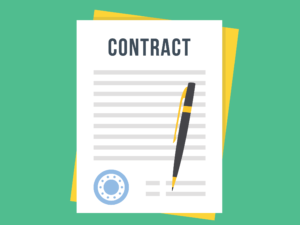How to Plan and Manage Home Loan Monthly Instalments

Buying a home can take years to materialise and given the prices, only a few can afford to pay such a whopping amount. In such situations, buyers turn to banks for home loans. However, opting for a Home Loan is not an easy task. It is the biggest financial commitment that you have to make in your life.
Home loan EMIs incur a monthly fixed obligation for a household for at least a decade and can become a financial burden if the EMIs are not budgeted appropriately.
Thus, it is better to plan your EMIs in a manner that they do not add any financial burden to your household expenses. There are multiple factors that you need to consider while opting for a home loan EMI.
#1. Estimate Earnings:
Your earnings play an important role in deciding your monthly installment amount on home loans. If you have a stable job in a reputed company, your lender and you can safely predict that with time your earnings will be stable and in fact increase as grow in seniority. In such a case, you can opt for a slightly higher EMI than recommended based on your existing salary. It may affect your bank balance initially, but in a few years, the EMIs will not seem a burden at all. Banks usually consider 50-65% of your income as income available to service fixed obligations like EMI. But since your salary changes are uncertain, an EMI amount which also lets you keep at least 15% of your income for savings should be a preferred position. Moreover, if you are a businessman or self-employed professional then uncertainty on cash-flows looms over all the time. So, plan your EMIs accordingly and if you think that your earning will increase in the nearby future, you can opt for higher EMIs to reduce your loan tenure. This means that the total interest that you’re supposed to pay to the lender also goes down.
#2. Plan Expenditures:
Before figuring out your EMIs, you should not only count in your current expenditure but also the increased spending that you will have to do in the future as your loan term progresses. Your current and potential expenditures such as family expenses, lifestyle expenses, expenses on kids, personal expenses, etc should be considered while you and the lender decide on your EMI. So, play safe before deciding on your home loan EMI to make repayments on time.
#3. Ascertain Repayment Capacity:
Before deciding your EMIs, you should assess your repayment capacity. Your repayment capacity is based on your monthly disposable or surplus income and other factors such as spouse’s income, assets, liabilities, stability of income, etc. You must be able to comfortably service your EMIs and pay back the loan on time.
#4. Age:
Age is an important factor that helps to determine your EMIs. Younger borrowers can easily get a loan for a longer tenure, while borrowers in late 40s or 50s may find it difficult to avail a long tenure loan as they approach retirement. If you are taking a home loan for a longer tenure, you have the option to pay a smaller chunk of your income towards EMIs and you can save some money for your future as well. If you want to get debt free early, then you can choose to pay heavy EMIs but this may not work if you start a loan at a later age as you will be eligible for a shorter tenure and hence higher EMI.
#5. Check for prepayments:
Home loan buyers also have the option to prepay the entire or part of the outstanding loan amount. Extra income in the form of bonus or maturity proceeds from insurance policies can be used to prepay a part of the home loan from time to time. The best thing is that in case of floating rate home loans, individual home loan borrowers are not required to pay prepayment charges and even if you do in case of fixed rate home loans or for loan taken in firm’s name, most of the leading banks don’t ask you to pay high charges. But still, it’s better to ask for prepayment and part payment charges before taking a home loan.
#6. Opt for home loan balance transfer:
Under this option, you can transfer the entire outstanding loan amount to another lender at a lower rate of interest and other better terms and conditions. However, you should consider switching, only if you’re getting a good dip in the interest rate. Home Loan Balance Transfer is advisable in the first few years as the interest component is high in initial years. The loan transferred in the mid or end of the tenure can work against you as you have paid maximum interest part in the initial years. As each time you shift to a different bank, you have to undergo the loan appraisal and underwriting processes, besides technical and legal paperwork, all over again.
#7. Compare interest rates:
Home loans are given both at fixed and floating interest rates. However, nowadays MCLR-linked home loans are preferred more as compared to fixed rate home loans. This is because fixed rate home loans are costlier and lock your EMI at a fixed rate. MCLR linked to home loans are floating rate home loans which means that the ROI will change on these loans when the banks choose to change it. However, a floating rate also means that your EMI changes with every change in ROI. So, while planning your EMI amount and tenure, you should be aware that in future you may have to pay an increased EMI or pay the same EMI but for an increased tenure.
#8. Manage your funds:
When you have a home loan to pay, it becomes important to manage your finances well. If you have invested in places that are not giving you necessary returns, you need to close all those investments and focus on prepaying your home loan EMIs instead. You can also save money by investing in options that give returns of 12 to 15 percent. This income can help you in prepaying the loan amount.
So in case you are struggling with EMI payments, take into account the above-mentioned factors to reduce your home loan interest burden. Also, don’t miss your EMI payments as it can severely affect your credit score.
Also Read: How Does an Online Home Loan EMI Calculator Works
The best way to calculate your EMI is by using online home loan EMI calculators. You can visit the website of your desired lender or use the online eligibility tools of leading online loans marketplaces like MyLoanCare.in. This tool will give you an estimated EMI that you need to pay for different tenures and interest rates. This will, in turn, help you to choose EMI and tenure as per your repayment capacity and affordability.






